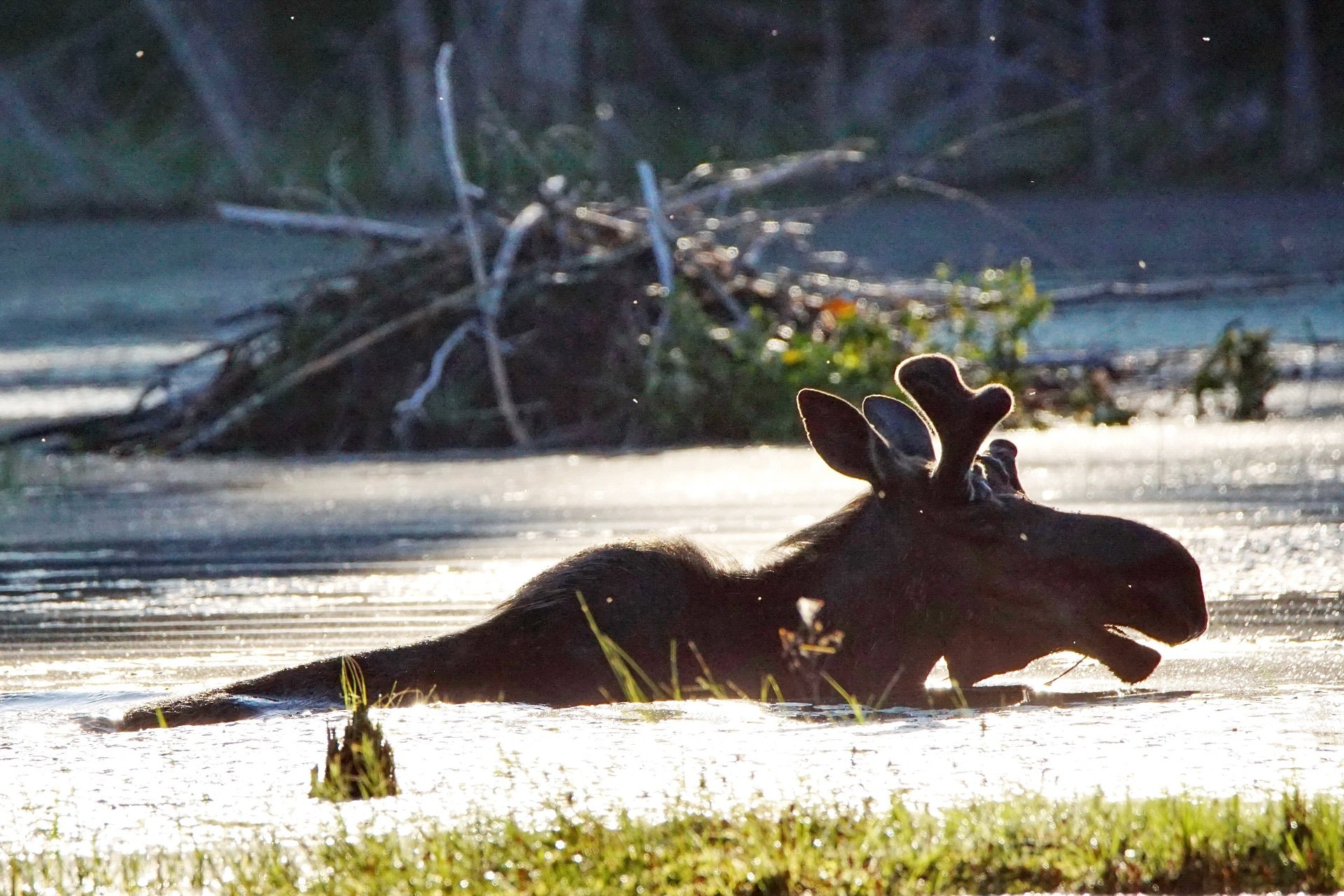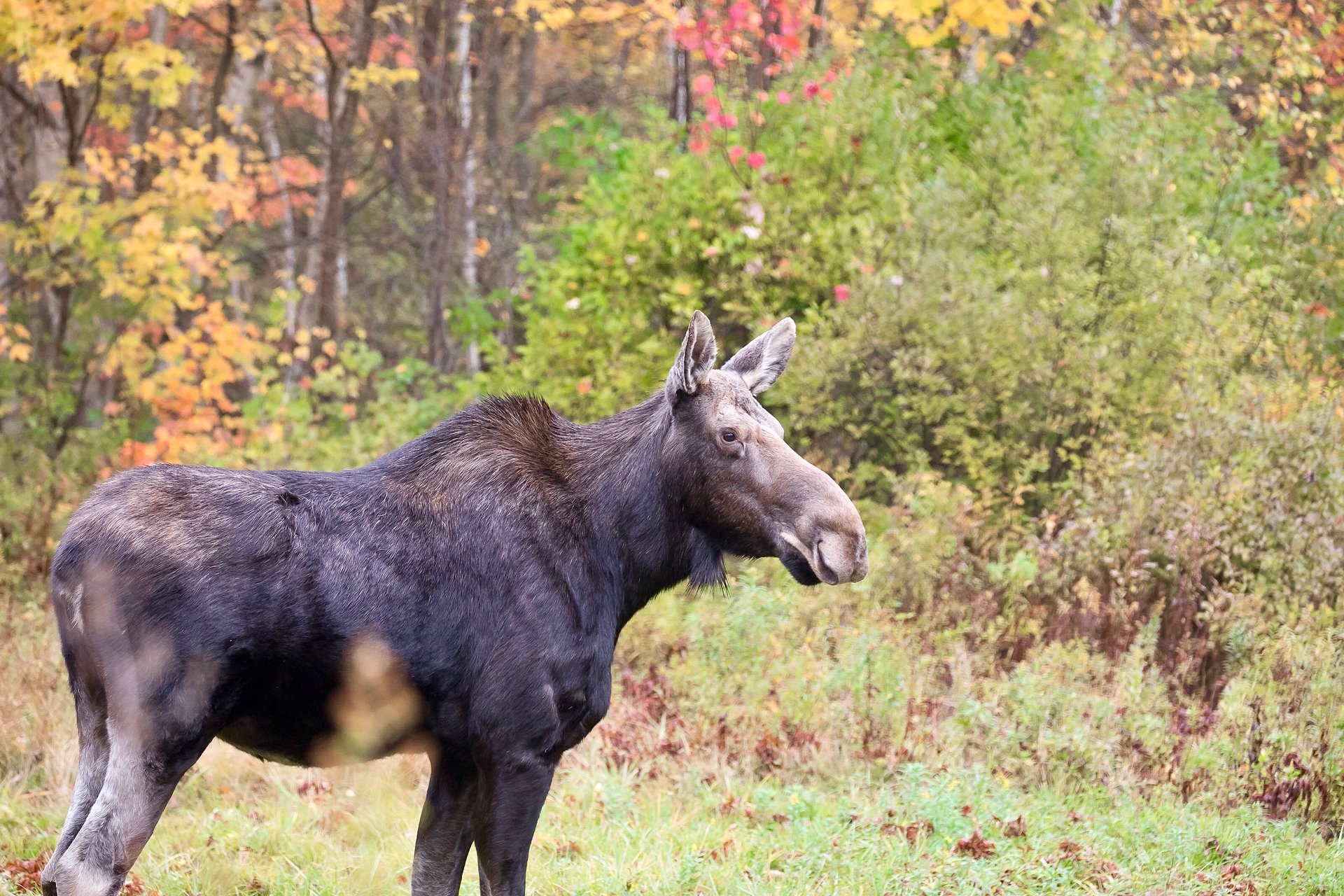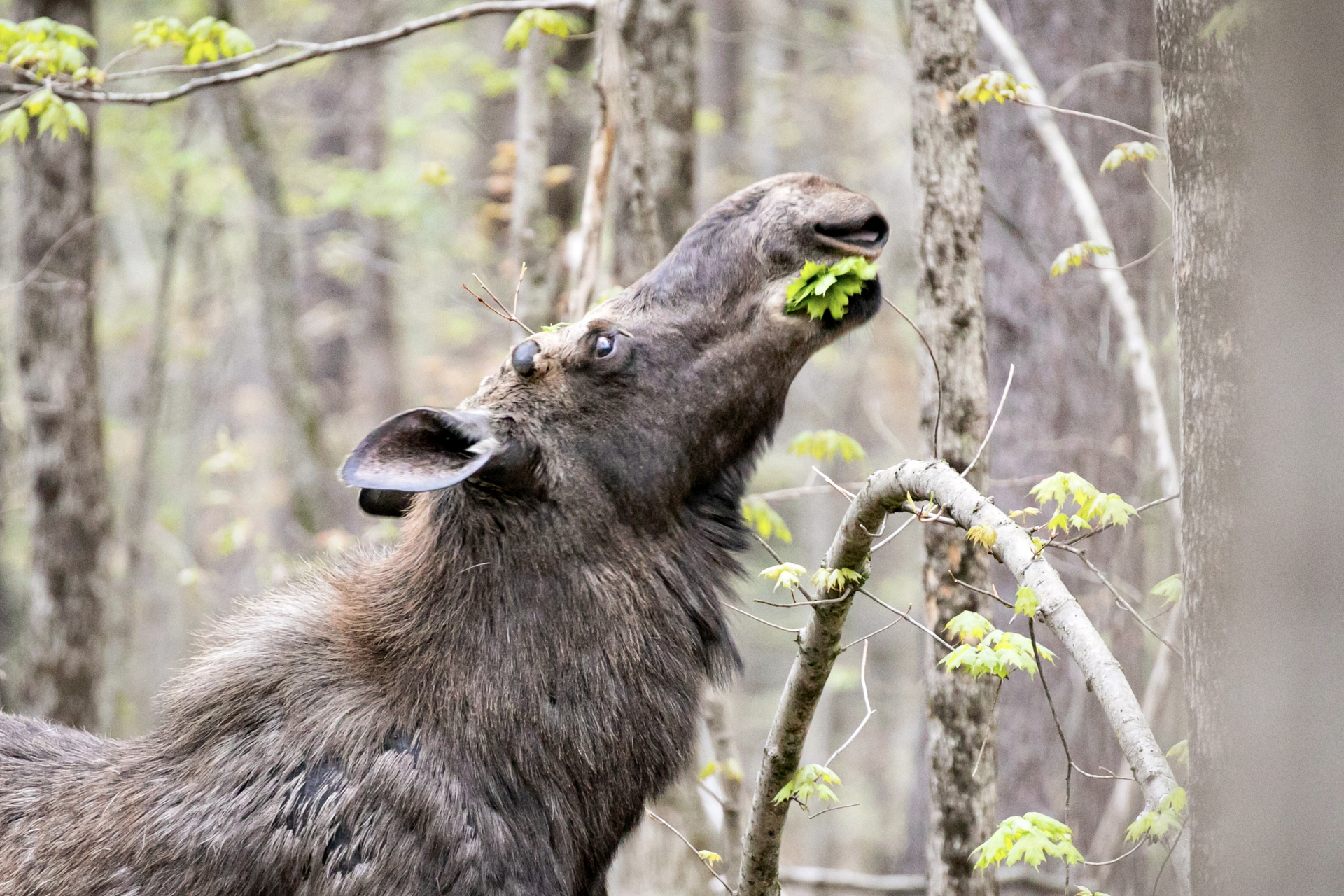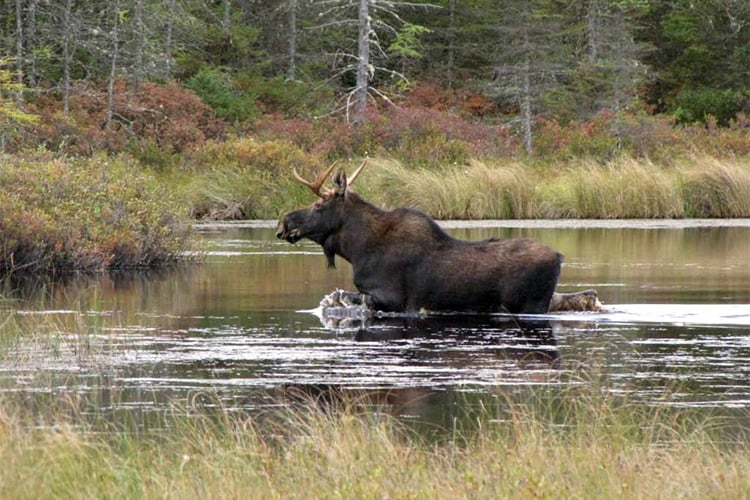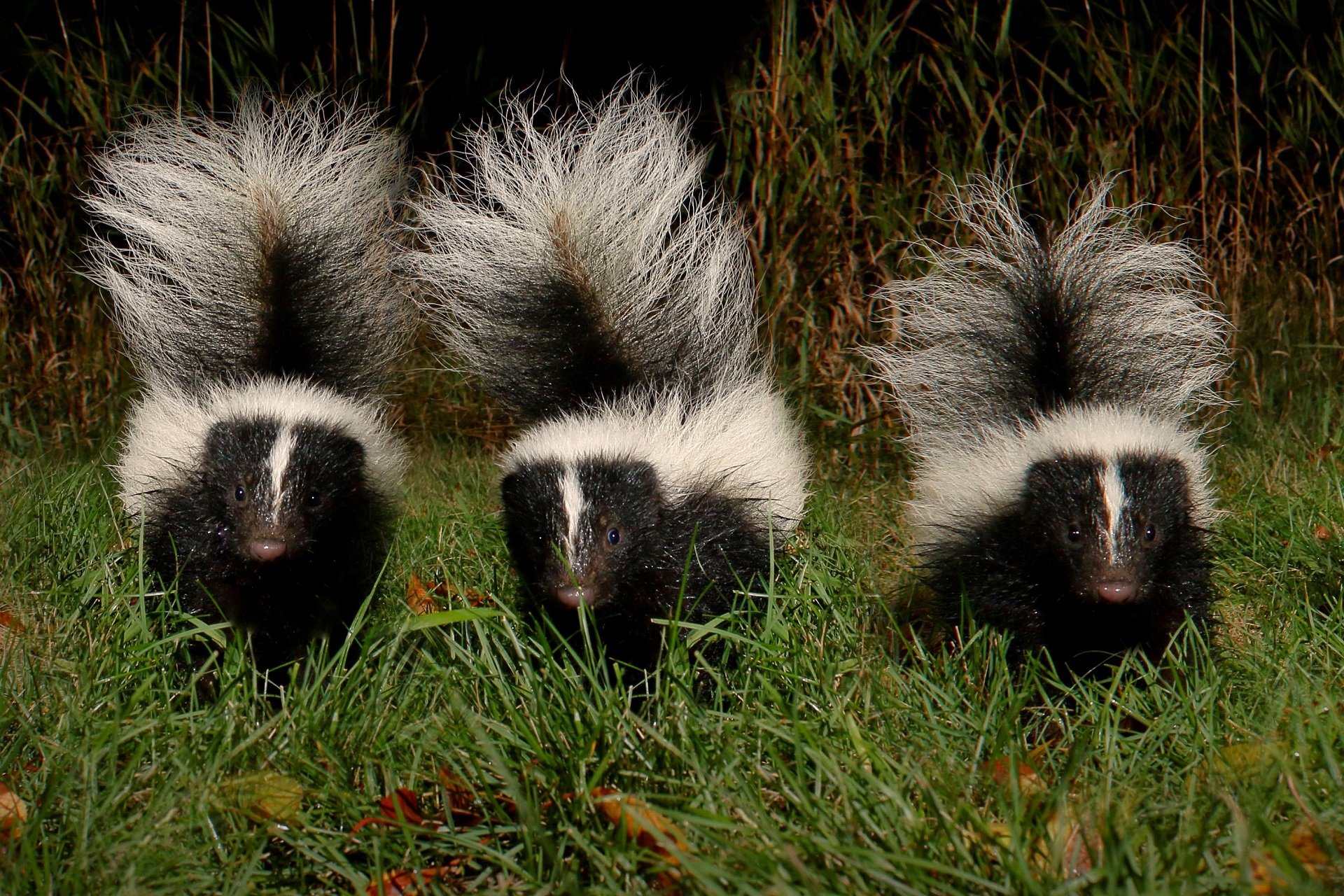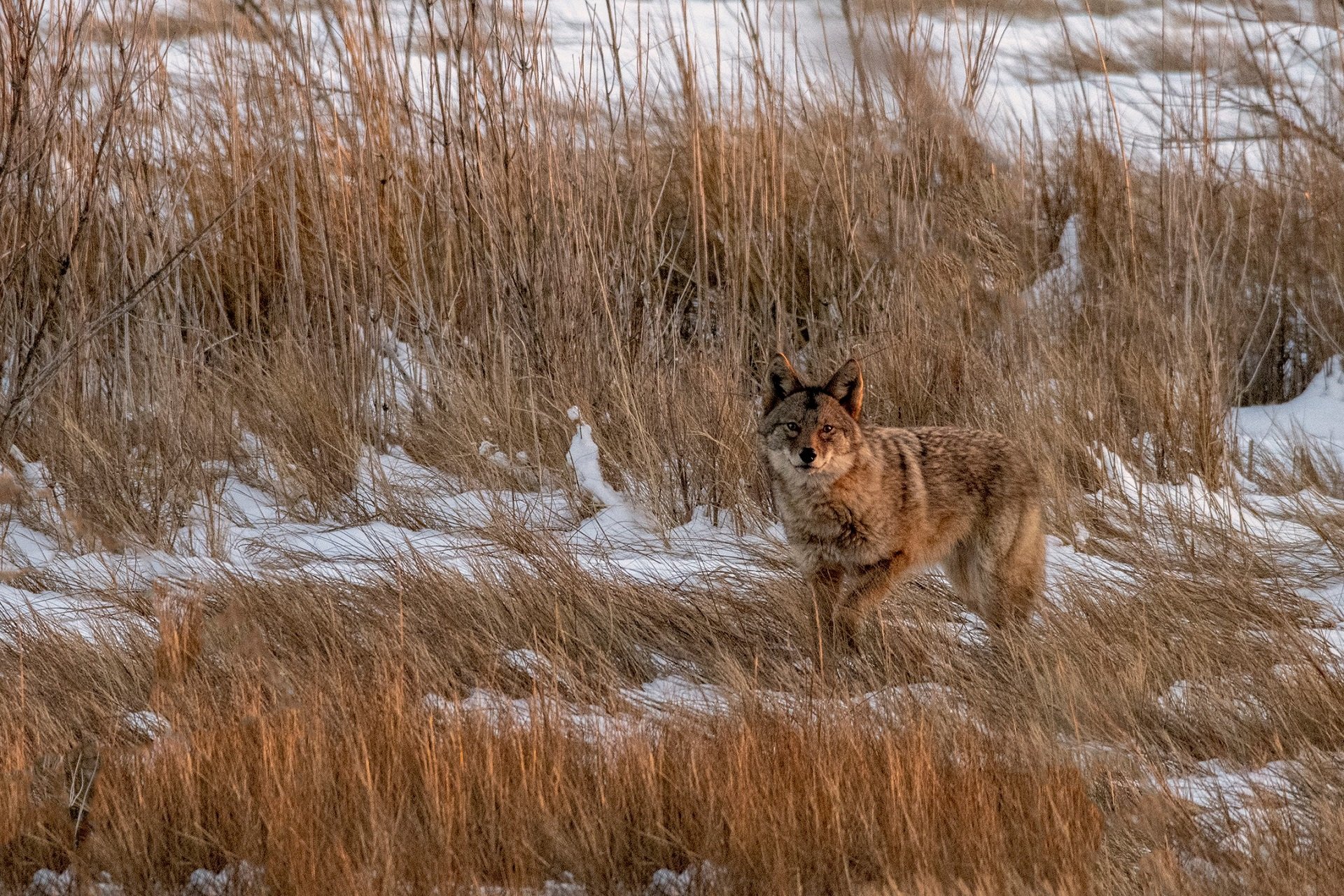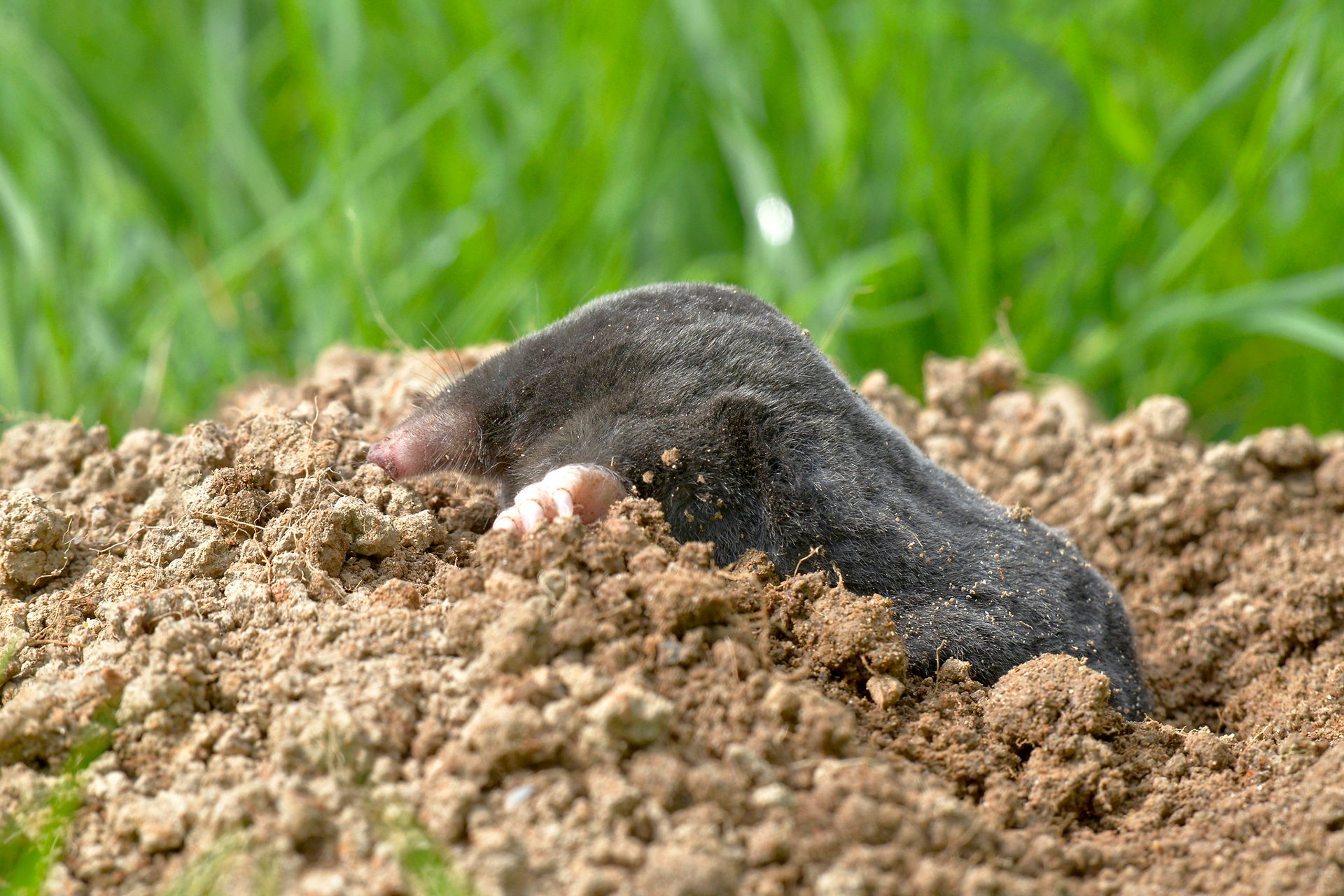Mammals in Massachusetts
Moose
Moose are the largest deer in the world. They are the second largest terrestrial animal in North America, following the bison.
How to Identify a Moose
At shoulder height, moose can stand up to 6 feet tall. An adult female generally weighs 500-700 pounds; an adult male 600-1,000 pounds. Their long legs help them travel in areas with deep snow and water. Their head resembles the shape of a horse, and a skin flap called the bell hangs beneath their chin, which is more distinctive in adult males (bulls). Coloration can vary but ranges from light brown to black.
Moose grow the biggest antlered animal in the world. Only males grow antlers, which start developing in the early spring. If the bull is fully grown and well-fed, his antlers can weigh over 30 pounds and measure 7 feet across.
Moose Behavior
What Do Moose Eat?
In Algonquin, the name moose means “eater of twigs” or “stripper of bark” and, indeed, moose are huge herbivores, eating up to 60 pounds of roughage daily. Because of their food requirements, Moose rely on young, regenerating forests, such as in recently harvested areas. Some favorites include willow, aspen, white birch, and mountain ash.
In winter, moose eat needle-bearing trees and hardwood bark, buds, and twigs. This ability to survive on rougher forage, such as needle leaf trees, distinguishes the moose from white-tailed deer that require more palatable forage. In the spring, Moose crave salt, leading them eat to aquatic vegetation which tends to contain more salt than terrestrial vegetation.
Like all deer, moose lack a set of upper incisors, so moose tear and strip bark rather than cutting their food neatly. Unlike smaller deer, moose browse very high—up to 7 feet above the ground. They sometimes snap the branches or walk down flexible saplings to reach leaves and twigs.
Where Do Moose Live?
Forests are the main winter habitats for moose, and since Massachusetts is the 8th most forested state in the country, it’s not surprising that moose join the growing list of animals, including fishers, eastern coyotes, wild turkeys, and beavers that have returned to our neck of the woods. In the summertime, moose enjoy wetlands to cool themselves off and stay protected from mosquitoes.
For the most part, moose can be found in central and western Massachusetts. Occasionally, a moose may even be spotted in the eastern part of the state.
Moose Life Cycle
The massive antlers on the bulls come in handy during the fall when they fight for females to mate with. Females give birth in May and June, usually to single calves who stay with their mothers for one year. A newborn calf can weigh 20-25 pounds and stand within the first 12 hours. They are weaned off by the mother at six months and independent by the end of the first year.
Mother moose are extremely protective of their young and have been known to be aggressive toward any potential threats. If you see an adolescent moose, keep an eye out for its mother, who is probably nearby.
What To Do If You See a Moose
Despite their large size, moose are hard to find. You’re most likely to see one in September and October during breeding season (when males go in search of a mate) and again in May when the young of the previous year leave their mother before she calves again.
It can be thrilling to see such a large, beautiful animal in the wild, but be careful! Moose can be aggressive, specifically males during breeding season and females after calving.
If you do see a moose east of Route 495, or in a densely populated area, please report your finding to MassWildlife to help them continue to monitor moose populations.
Car Collisions with Moose
A collision with a moose can be severe since their body is tall enough to land through the windshield. Always remain alert, especially at night when their dark bodies can be hard to see and their eyes too high to reflect in car headlights. Swerving to avoid contact can also be dangerous, so it is best to drive slowly and brake if you see a moose on the road.
Threats Facing Moose
Because of their size, moose have few natural predators. Black bears and coyotes can prey on the young, sick, and injured, but rarely take on a full grown, healthy moose. Most deaths are caused by disease, starvation, climate change, brainworm, old age, and car accidents.
Climate Change Impacts on Moose
Winter ticks are known to feast on moose throughout New England. Ticks search for hosts in the fall, enjoy hearty meals until the winter, and stop or fall off their hosts once freezing temperatures set in. Climate change is leading to milder and shorter winters in New England, which is allowing more winter ticks to not only survive but continue their feast for longer. These ticks are severely damaging moose populations, as increased tick numbers drain too much blood than even our massive moose can withstand.
How Mass Audubon Helps Moose
Mass Audubon is helping moose by protecting land, building resilient landscapes, and creating early successional forest habitats that have abundant forage for moose. You can help us conserve and protect moose habitats by becoming a member today.
Stay Connected
Don't miss a beat on all the ways you can get outdoors, celebrate nature, and get involved.



